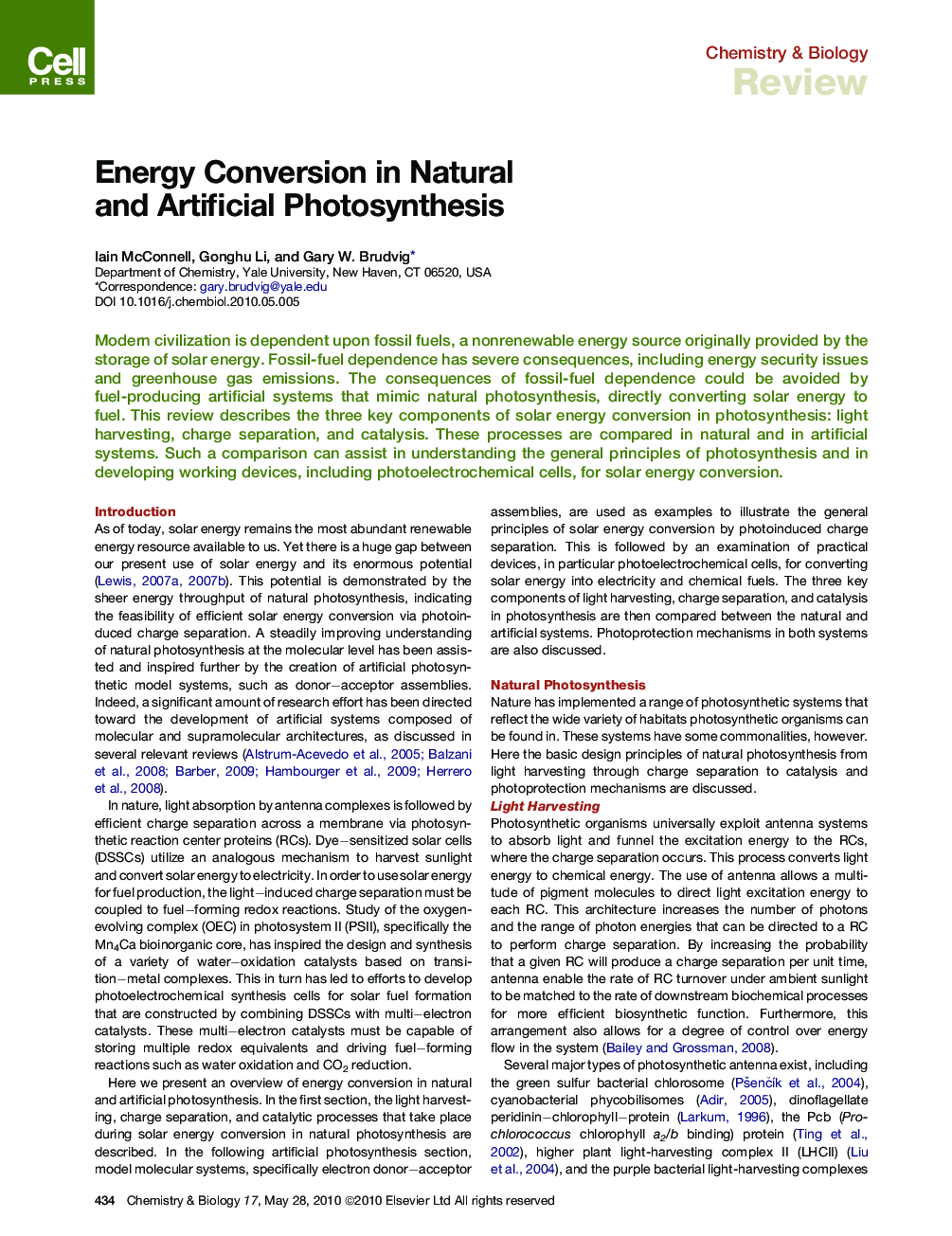| Article ID | Journal | Published Year | Pages | File Type |
|---|---|---|---|---|
| 1391584 | Chemistry & Biology | 2010 | 14 Pages |
Modern civilization is dependent upon fossil fuels, a nonrenewable energy source originally provided by the storage of solar energy. Fossil-fuel dependence has severe consequences, including energy security issues and greenhouse gas emissions. The consequences of fossil-fuel dependence could be avoided by fuel-producing artificial systems that mimic natural photosynthesis, directly converting solar energy to fuel. This review describes the three key components of solar energy conversion in photosynthesis: light harvesting, charge separation, and catalysis. These processes are compared in natural and in artificial systems. Such a comparison can assist in understanding the general principles of photosynthesis and in developing working devices, including photoelectrochemical cells, for solar energy conversion.
Graphical AbstractFigure optionsDownload full-size imageDownload high-quality image (155 K)Download as PowerPoint slideHighlights► Solar energy conversion uses light harvesting, charge separation, catalysis, and photoprotection ► Nature uses large antenna, but fewer light-harvesting units are optimal for artificial systems ► Natural photosystems rapidly separate charges to avoid recombination ► Nature uses abundant Mn for water oxidation catalysis, but the best artificial catalysts use Ru or Ir ► Photoprotection in artificial systems may increase the useful life of solar devices
